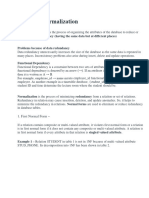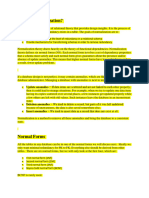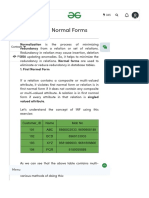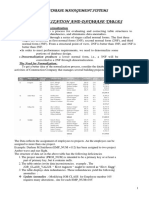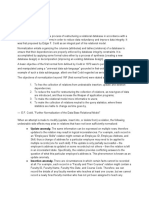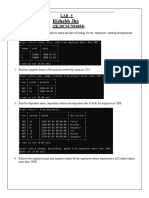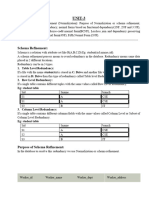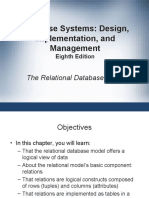0% found this document useful (0 votes)
134 views32 pagesSQL Database Normalization Guide
The document discusses normalization of SQL databases. It defines normalization as a technique to minimize redundancy and dependency in database schemas by splitting large tables into smaller tables and defining relationships between them. The document covers various normal forms including 1NF, 2NF, 3NF, BCNF and anomalies like insert, delete and update anomalies. It provides examples to explain different normal forms and how tables can be normalized to eliminate anomalies and redundancy by following the normal forms.
Uploaded by
Syed AmeerCopyright
© © All Rights Reserved
We take content rights seriously. If you suspect this is your content, claim it here.
Available Formats
Download as PPTX, PDF, TXT or read online on Scribd
0% found this document useful (0 votes)
134 views32 pagesSQL Database Normalization Guide
The document discusses normalization of SQL databases. It defines normalization as a technique to minimize redundancy and dependency in database schemas by splitting large tables into smaller tables and defining relationships between them. The document covers various normal forms including 1NF, 2NF, 3NF, BCNF and anomalies like insert, delete and update anomalies. It provides examples to explain different normal forms and how tables can be normalized to eliminate anomalies and redundancy by following the normal forms.
Uploaded by
Syed AmeerCopyright
© © All Rights Reserved
We take content rights seriously. If you suspect this is your content, claim it here.
Available Formats
Download as PPTX, PDF, TXT or read online on Scribd
/ 32









